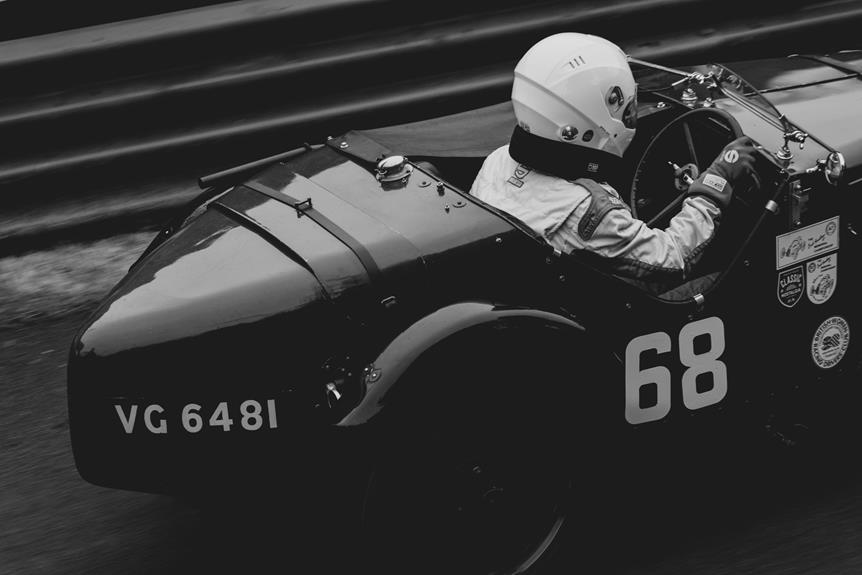In the world of mixed martial arts, ONE Championship and the UFC stand as two dominant organizations that have captivated fight fans globally.
With 14 key differences explored, this article delves into the contrasting rules, time zones, event locations, fighter recruitment, weight classes, promotion size, and broadcasting approaches of these mighty entities.
By examining these distinctions, enthusiasts gain a comprehensive understanding of what sets ONE Championship and the UFC apart, showcasing the unique experiences they offer in the exhilarating world of MMA.
Key Takeaways
- ONE Championship and UFC have different rulesets, with ONE Championship allowing 12 to 6 elbows and grounded knee strikes, which are illegal in the UFC.
- ONE Championship is based in Singapore, while UFC is based in America. This results in a significant time zone difference between the two organizations.
- ONE Championship recruits mostly from Asia, while UFC recruits mostly from America. ONE Championship aims to capture a global audience by recruiting fighters from different continents.
- Weight cutting is more prevalent in the UFC compared to ONE Championship, with UFC fighters often cutting up to 25 lbs before a fight. ONE Championship uses a rehydration protocol to prevent weight cutting.
Rules and Regulations
In the context of the knowledge provided, at this time, ONE Championship has its own blended ruleset while the UFC adheres to the Unified Rules of MMA. These divergent rulesets create notable differences in scoring systems and fighter safety measures between the two organizations.
ONE Championship judges score fights as a whole, taking into account overall performance, while the UFC scores fights based on rounds. This distinction can lead to varying outcomes and strategies for fighters.
Additionally, ONE Championship allows certain techniques that are deemed illegal in the UFC, such as 12 to 6 elbows and grounded knee strikes. Fighter safety measures also differ, with ONE Championship implementing a rehydration protocol to discourage extreme weight cutting, while the UFC commonly sees fighters cutting significant amounts of weight before a fight.
Understanding these differences in rules and regulations is crucial for fans and participants seeking mastery in the sport of mixed martial arts.
Time Zones, Headquarters, and Event Locations
ONE Championship is headquartered in Singapore, while UFC is based in America, and the two organizations operate in different time zones. Singapore is 12 to 15 hours ahead of the US, which can have a significant impact on fighter travel and scheduling. This time difference can make it challenging for fighters from the US to adjust to the local time when competing in Asia.
On the other hand, UFC events held in America are more convenient for American fighters in terms of travel and adjusting to the time zone.
Additionally, the cultural differences in event production are evident in the location choices. ONE Championship hosts a majority of its events in Asia, showcasing the rich cultural heritage and traditions of the region. UFC, on the other hand, hosts a majority of its events in America, reflecting the American influence on MMA and its global popularity.
Fighter Recruitment and Rosters
How does UFC recruit fighters for its roster compared to ONE Championship? The UFC predominantly recruits fighters from America, while ONE Championship focuses on recruiting fighters from Asia. However, ONE Championship aims to capture a global audience by actively recruiting fighters from different continents. This strategy is reflected in the diversity of fighter nationalities on their roster. While the UFC roster is predominantly American, followed by Brazilian, Russian, and British fighters, ONE Championship has a more even split between American, Russian, Brazilian, and Australian fighters. By recruiting fighters from various countries, ONE Championship is able to appeal to a wider range of fans around the world, contributing to their goal of capturing a global audience.
| UFC | ONE Championship |
|---|---|
| Predominantly American Fighters | More diverse roster including fighters from America, Russia, Brazil, and Australia |
Weight Classes and Weight Cutting
Weight cutting is more prevalent in the UFC compared to ONE Championship. This practice involves fighters dehydrating themselves to meet a lower weight class before rehydrating back up before a fight.
Here are three key points to consider regarding weight classes and weight cutting:
- Rehydration protocols: ONE Championship has implemented rehydration protocols to prevent drastic weight cutting. Fighters must weigh in on the day of the fight, limiting the time available for rehydration and discouraging extreme weight cuts.
- Impact on fighter's health: The process of weight cutting can have severe consequences on a fighter's health. Dehydration can lead to decreased performance, increased risk of injury, and even organ damage. By implementing rehydration protocols, ONE Championship aims to prioritize the well-being of its fighters.
- UFC fighters often cut up to 25 lbs before a fight: In contrast to ONE Championship's approach, UFC fighters commonly undergo drastic weight cuts, sometimes shedding up to 25 pounds in a short period. This extreme practice can put significant strain on the body and has raised concerns about the long-term health effects on fighters.
Promotion Size and Broadcasting
The UFC is considered the king of MMA, but ONE Championship has its own unique approach to promotion size and broadcasting.
While the UFC requires a monthly subscription or pay-per-view for most of its events, ONE Championship has a majority of its live events available for free. This approach to broadcasting allows ONE Championship to reach a wider audience and generate revenue through alternative means, such as sponsorships and partnerships.
Additionally, ONE Championship promotes up to four combat sports at an event, including MMA, kickboxing, Muay Thai, and submission grappling. This diverse offering not only attracts a wider range of fans but also provides opportunities for cross-promotion and fan engagement.
Marketing and Branding Strategies
While ONE Championship focuses on building a strong brand and engaging with fans, the UFC places a greater emphasis on individual fighter promotion and global recognition.
- Sponsorship partnerships:
ONE Championship has strategically aligned itself with various brands to form sponsorship partnerships. These partnerships not only provide financial support but also help to enhance the brand image and reach of ONE Championship.
On the other hand, the UFC also has sponsorship partnerships but tends to focus more on individual fighter sponsorships, allowing fighters to create their own personal branding.
- Social media presence:
ONE Championship has a significant presence on social media platforms, utilizing them to engage with fans and showcase their fighters. They actively promote their events, fighters, and behind-the-scenes content, creating a sense of community and connection.
The UFC, on the other hand, has a massive social media following and uses platforms like Twitter, Instagram, and Facebook to promote their events, fighters, and engage with fans. They've mastered the art of creating viral content and leveraging social media to generate buzz around their brand.
Conclusion
In conclusion, ONE Championship and the UFC may share a common goal of showcasing elite fighters and thrilling bouts, but their differences make each organization a unique force in the world of MMA.
From their distinct rules and regulations to their approach to weight cutting and event locations, these organizations offer fight enthusiasts a variety of experiences.
As the saying goes, 'Different strokes for different folks,' and both ONE Championship and the UFC cater to a diverse range of fighters and spectators, ensuring an exciting and dynamic landscape for the sport of mixed martial arts.
- 15 Best Martial Arts Weapons (Fighting & Training) - October 14, 2024
- Is Fencing a Martial Art? (Yes, 4 Reasons Why) - October 14, 2024
- 7 Best Martial Arts for Self-defense Ranked (Highly Effective) - October 14, 2024










